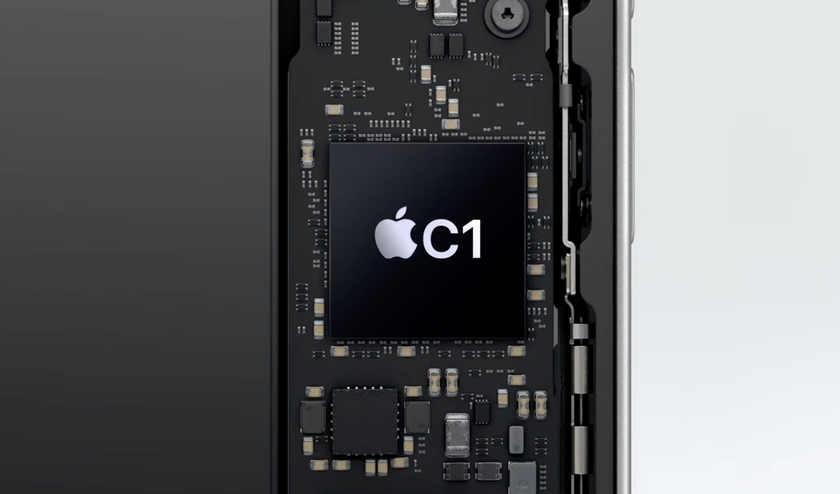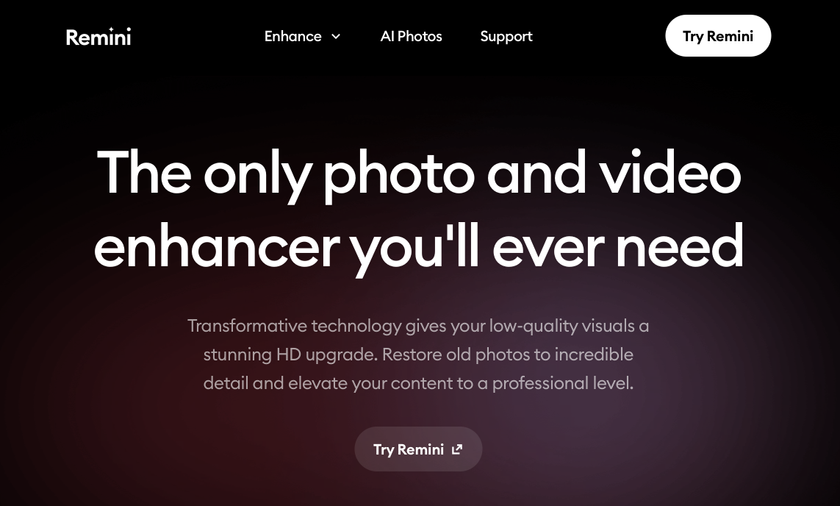Early Verdict
A worthy rival to the Surface Pro 4, and pretty much your only option if you want a powerful, enterprise-ready, 2-in-1 convertible.
Pros
- +
Full-fat Core i7 CPU
- +
Impressive range of accessories
- +
Decent keyboard
- +
Easy to service
Cons
- -
Only 8GB of RAM
- -
Noisy fan
- -
Processor should be faster
Why you can trust TechRadar
Laptops with a non-fixed keyboard, otherwise known as convertibles, hybrids or 2-in-1s, have been one of the few bright spots in the mobile computing market. That was not always the case, but the advent of Windows 10 coupled with a clear focus from Intel and its partners on that segment has seen much better solutions come to the market.
Microsoft provided an antidote to the PC market's lethargy with the original Surface, just like Google did with the Nexus products, and all the other PC vendors have since followed suit. Japanese manufacturer Fujitsu is one of the lesser known manufacturers, and like its big Nippon rival, Toshiba, it's focusing mostly on business products.
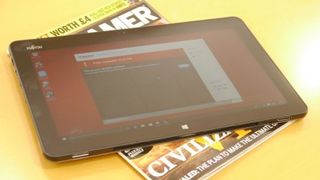
The Stylistic R726, which runs Windows 10 Pro, is squarely aimed at Microsoft's Surface Pro 4 with a kickback stand and a dumb detachable magnetic keyboard. But there are striking similarities as well as Fujitsu – which builds the R726 in Germany – designed it with system administrators, security, management and serviceability in mind.
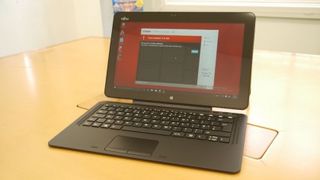
Our sample model came with a Core i7-6600U processor and costs £1,211 (around $1,610, AU$2,110) with an optional docking station adding another £108 (around $143, AU$190). Both prices are excluding VAT, and a keyboard plus an active stylus are bundled by default. Note that slower and cheaper models exist, with a Core i3 one equipped with 4GB of RAM costing well under £660 (around $875, AU$1,150).
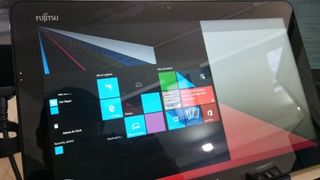
All models sport a 12.5-inch PLS display with a 1,920 x 1,080 resolution – sadly with a reflective surface and a larger than average bezel – encased in a grey magnesium-alloy chassis. Fujitsu quotes 700 cd/m2 for brightness and 1400:1 for the contrast ratio, both of which are reasonable for an enterprise device.
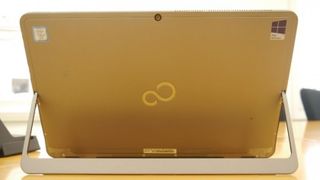
Aimed at a conservative audience, this hybrid looks reasonably unassuming with the company's figure-of-eight logo being the only thing showing at the back (plus a few stickers).
There's a lot of air vents to cool the components but that didn't prevent the processor's fan from kicking in from time to time, even when not under load.
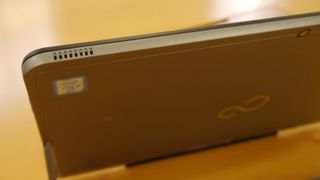
The R726 is less than 9mm thin and weighs 830g. It's neither the thinnest or the lightest device but, as we will see later, it didn't aim for either of these accolades, and, in the end, didn't have to make the sort of compromises that some of its rivals were forced into.
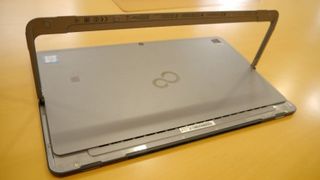
Kickstands are like Marmite and we are not a big fan of them since you can't use them properly on your lap. This one can extend perpendicularly to the back of the tablet which translates into a 45 degrees viewing angle. It is sturdy though and doesn't give even under forceful prodding of the screen.
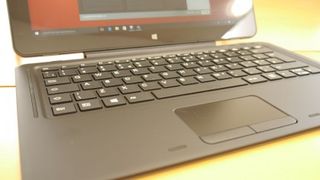
The keyboard is a Type Cover one, similar to the Surface range. It attaches magnetically to the base of the tablet and shares some of the pitfalls of that category of input peripherals: Short travel, a distinct lack of feedback, but otherwise a comfortable typing experience not far from that of the Dell XPS 13. Credit to Fujitsu though, the touchpad (albeit a small one) comes with two physical buttons.
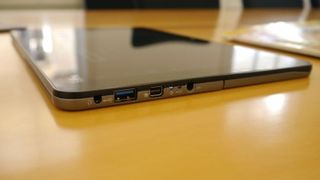
Note that you can use the keyboard even when the tablet is docked. The cradle comes with a GbE port, DisplayPort, HDMI, VGA, two audio ports and two USB connectors.
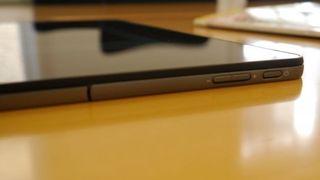
Four SKUs are available and the one we looked at – the most expensive one – has 8GB of RAM and a 512GB M.2 OPAL-compliant SSD courtesy of Samsung. The CPU is a dual-core model with a base speed of 2.6GHz. On top of that, the R726 supports vPro with optional 4G/LTE connectivity, NFC and Wi-Di.
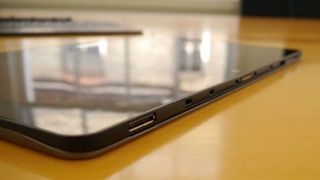
Other features include rear and front cameras, a USB 3.0 port, one Mini DP port (allowing the device to output to a 4K monitor), an audio port, a microSD card slot, Bluetooth 4.1 LE, 802.11ac Wi-Fi and GPS.
As expected, this device is far more secure than any consumer tablets or laptops. Other than TPM 2.0, it comes with options for encrypted drive, contactless SmartCard authentication and a secure BIOS.
Its 4-cell 34Whr battery can last for almost 10 hours according to tests carried out by Fujitsu using the industry standard test bench, BAPCo MobileMark 2014.
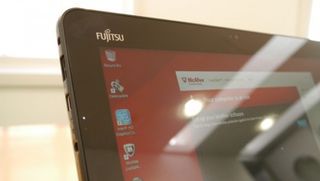
The company kept bundled software to a minimum: there's Adobe Acrobat Reader, Cyberlink Youcam, McAfee Internet Security, a trial of Microsoft Office 365 and a number of Fujitsu maintenance/administrative tools.
Our sample came with an active digitiser stylus which is powered by a battery. Unlike say, the ThinkPad X1 Yoga, this one doesn't have a dedicated charging bay which makes it more likely to get lost.
It is reasonably chunky with two buttons and while it doesn't have the same level of sensitivity as say, a Wacom digitiser, it does a good job when it comes to jotting down notes.
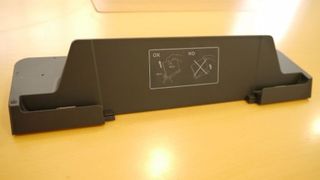
In benchmarking with Cinebench R15, the Stylistic R726 reached 35.43 fps (Open GL) and 171cb (on the CPU test). That last score is far lower than it should be for some reason. The Lenovo ThinkPad X1 Yoga which we reviewed recently scored 302cb with the same CPU and a similar configuration.
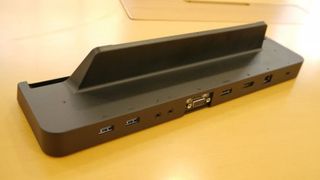
On the CPU-Z benchmark, Fujitsu's machine scored 1673 and 1908 points respectively which alludes to an issue with the sample provided.
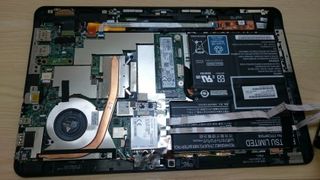
Taking off the back cover of the R726 proved to be easier than expected. Eight screws have to be removed and you get access to the entire motherboard with the M.2 SSD and the radio module being two components that can be user-serviced.
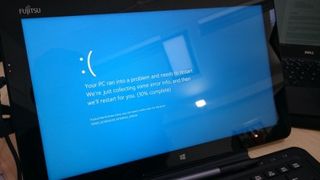
Note that Windows 10 Pro did crash on us during our hands-on due to some weird issues with the graphics drivers.
Fujitsu provides an industry-leading two-year warranty across Europe, Middle East, India and African countries, either with collect and return or bring-in service depending on the country.
Early verdict
Aside from the kickstand debate and the fan, there is not much to dislike about the R726. Sure it is expensive, but this is a product aimed at an enterprise audience. We loved the cradle which should be included as a bundle. The LTE connectivity option and the overall serviceability will inevitably please IT admins.
In hindsight, comparing this to the Surface Pro 4 only serves to highlight what a good deal the R726 is. The two are likely to cost the same once you factor in the options, but little extras like NFC, a proper docking station and a far better warranty make the R726 the better option for enterprise.
Out of the other PC vendors, neither HP, Lenovo or Dell offers a comparable rival, one that runs on full-fat Core i7 with a detachable keyboard. All of them settled for the Intel Core M7.

Désiré has been musing and writing about technology during a career spanning four decades. He dabbled in website builders and web hosting when DHTML and frames were in vogue and started narrating about the impact of technology on society just before the start of the Y2K hysteria at the turn of the last millennium.
What is a hands on review?
Hands on reviews' are a journalist's first impressions of a piece of kit based on spending some time with it. It may be just a few moments, or a few hours. The important thing is we have been able to play with it ourselves and can give you some sense of what it's like to use, even if it's only an embryonic view. For more information, see TechRadar's Reviews Guarantee.
Most Popular






